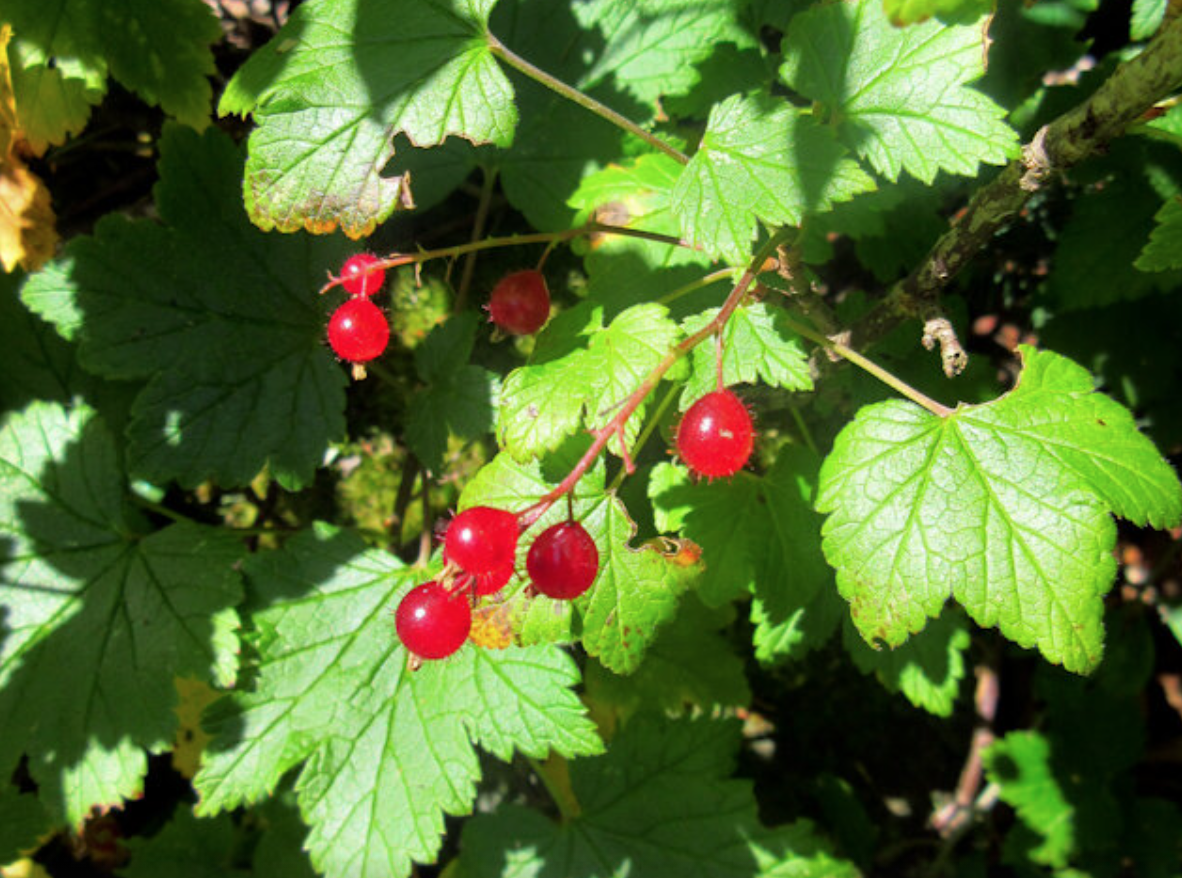
Ribes glandulosum, Maine, not bad when fully ripe.
There are more than 80 species of Wild Currants and Gooseberries (Ribes.) The latter is heavily armed with spines and prickles the former is not. Therein lies a great distinction and less pain.
At least 42 different species of Wild Currants were eaten by Native American groups. There may be 50 species of currants and their names are always changing. Wild Currants like cooler weather as do Gooseberries.They are more above the Mason-Dixon line than below it. However, the USDA says currants are native or introduced to all of North America except Alabama. I used to see them around abandoned houses in the rural areas of Maine.
A representative nutritional profile for one Wild Currant, 100 gram serving, has: 50 calories, 1.4 grams of protein, 0.2 grams of fat, 12.1 grams of carbohydrates, and 34 grams of fiber. It has 41 mg of vitamin C, about two thirds of your daily need, and 72 RE of vitamin A. As for B vitamins, B1(thiamin) 0.04 mg, B2 (riboflavin) 0.05 mg, and B3 (niacin) 0.1 mg. The minerals are: potassium 257 mg, calcium 32 mg, phosphorus 23 mg, sodium 20 mg, magnesium 13 mg, iron 1 mg, zinc and manganese 0.2 mg and copper 0.1 mg.
The Natives had a wide variety of uses for the various Wild Currants as some were tart and other sweet, some strong smelling others not. They were eaten fresh, cooked or dried. They were mixed with other berries to produce certain flavors and or mixed to make wine. Through dried they were not usually stored for long b
Green Deane’s Itemized Plant Profile
IDENTIFICATION: Currants are shrubs rarely more than six feet high. The leaves remind one of a maple leaf. They usually have scalloped edges and three to five distinct lobes. The veins on the leaf fan out from the base like fingers on a hand. If you crush a leaf it can have a skunk-like aroma, be citrusy or spicy. Flowers can be white, yellow or red. The berries — in clusters —can be black and blue or red and gold. They usually have stripes up and down the berry. Unripe berries are green. There are numerous cultivars and they can liberate themselves into the countryside.
TIME OF YEAR: Fragrant flowers April to June, ripe fruit early fall.
ENVIRONMENT: Full sun, well-drained medium to heavy soil. Afternoon shade in warm climates.
METHOD OF PREPARATION: Preserves, jams, jelly, pie filling, garnish, salad addition. Underripe berries have more pectin.

